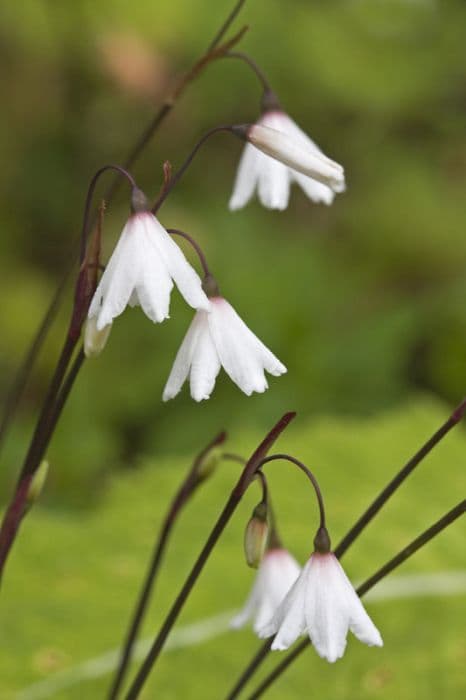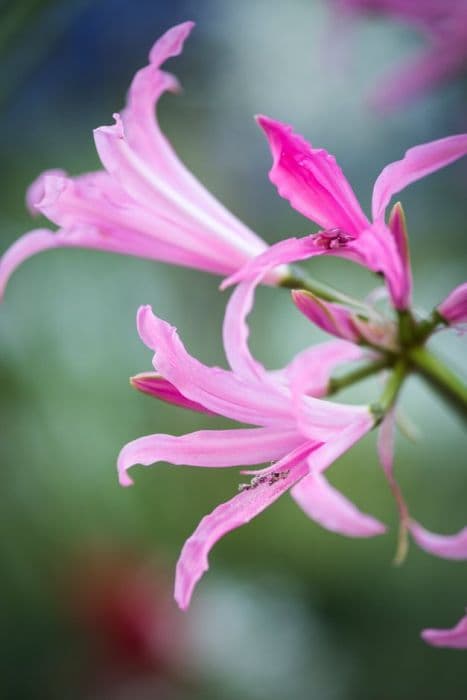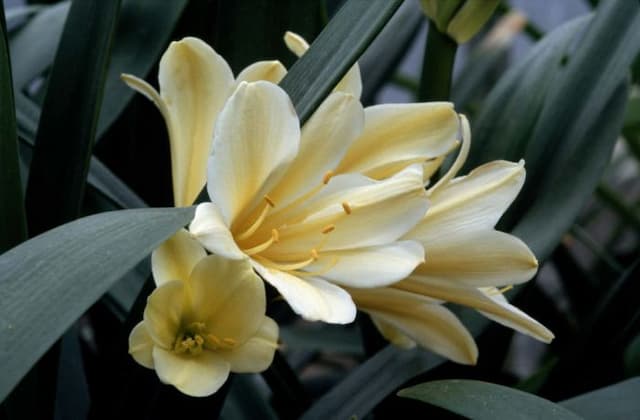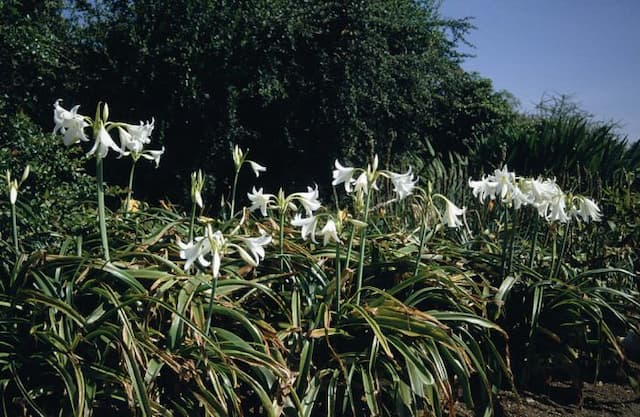Daffodil 'Gold Convention' Narcissus 'Gold Convention' (2)

ABOUT
'Gold Convention' is a Large-cupped daffodil to 50cm in height, with erect, strap-shaped leaves and bright yellow flowers 11cm in width with expanded, deep yellow trumpet
About this plant
 Names
NamesFamily
Amaryllidaceae
Synonyms
Daffodil, Jonquil, Narcissus
Common names
Narcissus 'Gold Convention'
 Characteristics
CharacteristicsLife cycle
Perennials
Foliage type
Deciduous
Color of leaves
Green
Flower color
Yellow
Height
1-1.5 feet (30-45 cm)
Spread
0.5-1 feet (15-30 cm)
Plant type
Bulb
Hardiness zones
3-9
Native area
Europe
Benefits
 General Benefits
General Benefits- Aesthetic Appeal: Adds vibrant yellow color and unique beauty to gardens and landscapes.
- Easy to Grow: Requires relatively low maintenance, making it suitable for gardeners of all skill levels.
- Spring Blooms: Flowers in the spring, providing early color after winter months.
- Perennial Nature: Comes back year after year, reducing the need for annual replanting.
- Naturalizing: Spreads over time to create larger displays of color with minimal intervention.
- Cut Flower: Can be used in floral arrangements to brighten indoor spaces.
- Cold Hardy: Resistant to cold temperatures, making it suitable for cooler climates.
- Pest Resistance: Less prone to problems with pests, reducing the need for chemical treatments.
- Symbolic: Often symbolizes rebirth and new beginnings, which can add a layer of meaning to gardens and gifts.
 Medical Properties
Medical PropertiesThis plant is not used for medical purposes.
 Air-purifying Qualities
Air-purifying QualitiesThis plant is not specifically known for air purifying qualities.
 Other Uses
Other Uses- Cut Flower Arrangements: The Daffodil 'Gold Convention' adds bright, cheerful colors to bouquets and floral displays.
- Photography Subject: As an iconic sign of spring, the Daffodil serves as an excellent subject for photographers specializing in plant and nature photography.
- Educational Tool: Daffodils can be used in educational settings to teach children about plant biology, life cycles, and horticulture.
- Fabric Dye: The petals could potentially be used to create a natural yellow dye for coloring fabrics.
- Eco-friendly Confetti: Dried petals of the Daffodil can serve as a biodegradable confetti alternative for celebrations.
- Art Inspiration: Artists may use the vibrant yellow color and shape of the Daffodil as inspiration in their artwork.
- Symbolic Gift: Daffodils are symbolic of new beginnings and are often gifted to bring good fortune or to celebrate new ventures.
- Garden Design: Daffodils are useful in garden design for creating color themes or as a feature in a spring bulb display.
- Themed Events: The Daffodil can be incorporated into event decorations for spring-themed parties or weddings.
- Symbolism in Literature: The Daffodil, often associated with narcissism due to its namesake myth of Narcissus, can provide thematic depth to literary works.
Interesting Facts
 Feng Shui
Feng ShuiThe Daffodil is associated with good fortune and is believed to bring positive energy into your home, especially during the Chinese New Year. Place Daffodils in the wealth corner of a room, which according to Feng Shui is the southeast, to attract prosperity and create a harmonious flow of chi.
 Zodiac Sign Compitability
Zodiac Sign CompitabilityThe Daffodil is not used in astrology practice.
 Plant Symbolism
Plant Symbolism- Renewal and New Beginnings: Being a spring flower, the daffodil often symbolizes rebirth and the coming of a new season or chapter in life.
- Vanity: Named after the Greek myth of Narcissus known for his self-obsession, daffodils can sometimes represent self-absorption or vanity.
- Prosperity: In some cultures, daffodils are seen as a sign of wealth and success, particularly if the first bloom is a double flower.
- Hope: Their bright and cheerful appearance makes daffodils a symbol of hope and encouragement.
- Unrequited Love: The daffodil can symbolize unrequited love, perhaps stemming from the story of Narcissus who fell in love with his own reflection.
- Respect: Giving a daffodil as a gift is said to indicate deep respect for someone else.
 Water
WaterFor the Daffodil 'Gold Convention', water should be applied to the soil around the bulb, ensuring the area is moist but not waterlogged. It is typically best to water once a week with about one inch of water, although this may vary depending on climate conditions and the soil's ability to retain moisture. During active growth in the spring and fall, maintain consistent moisture. Reduce watering once the foliage begins to yellow and die back after blooming. Over the summer, when the plant is dormant, watering can be decreased significantly or stopped altogether.
 Light
LightThe Daffodil 'Gold Convention' thrives in a location that receives full to partial sunlight. They perform best with at least six hours of direct sunlight daily. These plants can tolerate some light afternoon shade, especially in hotter climates. However, less light may result in weaker stems and fewer blooms, so choose a spot that is bright and sunny.
 Temperature
TemperatureDaffodils such as 'Gold Convention' prefer moderate temperatures and can survive winter chills, making them suitable for a wide range of climates. They can typically handle temperatures as low as 20°F and as high as 70°F, but they flourish when the temperature is between 50°F and 60°F. Plant them in an area where they can stay cool during their dormant period in the summer.
 Pruning
PruningPruning of Daffodil 'Gold Convention' is generally limited to deadheading the spent flowers after blooming to prevent seed production, which can divert the plant's energy from producing blooms the following season. Remove only the flower heads and leave the foliage intact until it has yellowed and died back naturally, typically about six weeks after blooming, to allow the plant to store energy for next year.
 Cleaning
CleaningAs needed
 Soil
SoilDaffodils, like Narcissus 'Gold Convention', thrive in well-draining soil that's moderately fertile. A soil mix of equal parts loam, sand/grit, and leaf mold or compost is ideal. The soil pH should be slightly acidic to neutral, ranging from 6.0 to 7.0, ensuring the best growth and flowering conditions for these bulbs.
 Repotting
RepottingDaffodils such as Narcissus 'Gold Convention' are typically repotted every 2-3 years or when the bulbs become overcrowded in their current container. It's best to repot after the foliage has died back post-blooming.
 Humidity & Misting
Humidity & MistingDaffodils like Narcissus 'Gold Convention' prefer average home humidity levels. They are not particularly sensitive to humidity as long as they are planted in well-draining soil and are not overwatered.
 Suitable locations
Suitable locationsIndoor
Grow daffodils in cool, well-lit areas; water sparingly.
Outdoor
Plant in fall, full sun to part shade, in well-drained soil.
Hardiness zone
3-9 USDA
 Life cycle
Life cycleThe life cycle of the Narcissus 'Gold Convention', commonly known as Daffodil, begins with a dormant bulb planted in the ground during late summer to autumn, ideally before the first frost. As winter progresses, the cold period stratifies the bulb, which is essential for the initiation of growth. Upon the arrival of spring, the bulb breaks dormancy, and shoots emerge from the ground, developing into stems and leaves. Vibrant yellow flowers bloom in early to mid-spring, marking the reproductive stage, where pollination would occur, often facilitated by insects. After flowering, the plant enters a period of senescence; the foliage and flower stems die back, and the plant redirects energy to the bulb to store for the next growing season. The bulb then re-enters dormancy throughout the summer, conserving energy until the cycle restarts with the next temperature drop in the late year.
 Propogation
PropogationPropogation time
Early Autumn
The most popular method for propagating the Narcissus 'Gold Convention', commonly known as the Daffodil, is through division of bulbs. This is typically done in the fall after the foliage has died back but before the ground freezes. When dividing daffodil bulbs, carefully dig up the clumps of bulbs and gently separate them by hand. Larger bulbs can be directly replanted at a depth of about 6 to 8 inches (15 to 20 centimeters) and spaced approximately 6 inches (15 centimeters) apart. It's important to choose a well-draining location with plenty of sunlight. Water the newly planted bulbs well to help establish roots. This straightforward process can result in new, healthy daffodil plants that will bloom in the following spring.









